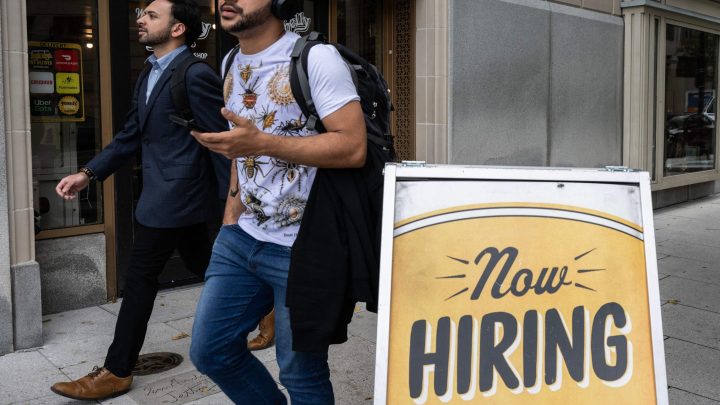
The job market might finally be returning to “normal,” economists say
The job market might finally be returning to “normal,” economists say

The Labor Department releases its September jobs report Friday morning. This report will be closely watched, especially now, because the Federal Reserve has been keen to see a slow down in job growth — in particular, wage growth — to tamp down inflationary pressures in the economy.
The consensus among economists for the September report is that we’ll see a little less payroll growth than in August: 160,000 instead of 187,000 new jobs. They also see unemployment falling a tick, from 3.8% to 3.7%, and labor force participation holding at 62.8%.
Those numbers aren’t very far off what we used to see back in the before times — before all the disruptions and distortions of the pandemic.
One year ago, back in August 2022, the economy was adding about 350,000 jobs a month, way above the historical average.
But, by August 2023, “the three-month rate of payroll growth slowed to just 150,000, that’s below the average we were seeing in 2019,” said Olivia Cross at Capital Economics.
Don’t worry — it’s still plenty to sustain a growing economy, said Elise Gould at the Economic Policy Institute.
“When we see job growth in excess of around 100,000, that means that not only are we keeping up with population growth, we’re pulling people in off the sidelines,” Gould said.
Gould sees a job market returning pretty close to pre-pandemic normal.
“The share of workers between 25 and 54 with a job is now at or higher than before, particularly for women. We have very low Black unemployment. So there are many metrics that look very much like 2019 — and even better.”
“I think we’re pretty close to what I’d consider to be a ‘good normal,’ unemployment somewhere between 3.5% and 4%. That’d be consistent with a full-employment economy,” said Mark Zandi, chief economist at Moody’s Analytics.
He said one metric that hasn’t returned to “norm” yet is wage growth, which is a biggie for the Fed.
One year ago, average hourly earnings were rising 5% a year.
“Right now we’re probably somewhere between 4 and 4.5. I think the Fed would like to see something closer to 3.5 to 4. So we’re within spitting distance, but not quite there yet,” Zandi said.
Olivia Cross at Capital Economics is confident we will get there.
As evidence, she points to the quits rate — how many workers voluntarily leave their jobs for new ones, usually to get higher pay.
“That’s pointing to wage growth easing to around 3.5% by the end of the year,” Cross said.
Before the pandemic, in 2019, wage growth was running close to that, between 3.5% and 3%.
There’s a lot happening in the world. Through it all, Marketplace is here for you.
You rely on Marketplace to break down the world’s events and tell you how it affects you in a fact-based, approachable way. We rely on your financial support to keep making that possible.
Your donation today powers the independent journalism that you rely on. For just $5/month, you can help sustain Marketplace so we can keep reporting on the things that matter to you.

















